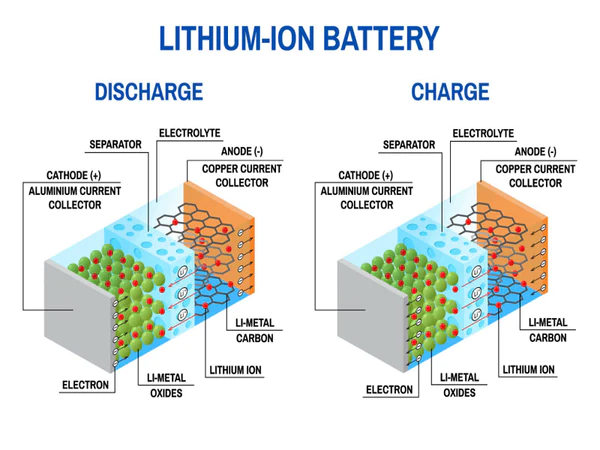The latest advances in lithium-ion (Li-ion) battery technology have been pivotal in driving forward the capabilities of energy storage, portable electronics, electric vehicles (EVs), and renewable energy systems. Innovations in materials science, electrode design, and battery architecture are at the heart of increasing the capacity and efficiency of these batteries. This article explores the forefront of lithium-ion battery research and development, highlighting key breakthroughs that are setting new benchmarks for performance.

Silicon Anodes
One of the most promising areas of advancement is the development of silicon-based anodes. Silicon has a much higher theoretical capacity than the traditionally used graphite, offering up to ten times the energy storage capacity. However, the challenge has been silicon’s significant volume expansion during lithium intake, which can lead to rapid degradation. Recent innovations have focused on nanostructured silicon, silicon composites, and silicon-carbon blends, which help to accommodate volume changes and maintain structural integrity, significantly enhancing battery life and capacity.
Solid-State Electrolytes
Solid-state batteries represent a significant leap in lithium-ion battery technology, substituting the liquid electrolyte with a solid counterpart. This change can potentially increase battery safety by eliminating flammability issues associated with liquid electrolytes. Solid-state electrolytes also enable the use of lithium metal anodes, which can significantly increase energy density compared to graphite. Researchers are exploring various materials for solid electrolytes, including polymers, ceramics, and glass, to find the optimal balance of ionic conductivity, stability, and manufacturability.
High-Nickel Cathodes
Cathode materials are also undergoing rapid development, with high-nickel NMC (nickel manganese cobalt) and NCA (nickel cobalt aluminum) formulations leading the charge. These materials offer higher energy densities by increasing the nickel content, which contributes to higher capacity. However, the challenge has been to maintain stability and safety, as higher nickel content can lead to thermal instability. Advances in coating technologies and structural enhancements are helping to mitigate these risks, making high-nickel cathodes a viable option for next-generation lithium-ion batteries.
Advanced Electrolyte Solutions
The electrolyte plays a crucial role in the performance of lithium-ion batteries, influencing ionic conductivity, stability, and overall efficiency. Innovations in electrolyte composition, such as the addition of additives and the development of new solvent systems, are improving the performance of lithium-ion batteries. These advances help to form a more stable solid electrolyte interphase (SEI) on the anode, reduce internal resistance, and improve ionic conductivity, all of which contribute to higher efficiency and longer battery life.
Lithium Metal Anodes
Lithium metal offers the highest theoretical capacity of any anode material, making it an ideal candidate for increasing battery capacity. The challenge has been in controlling lithium dendrite growth, which can lead to short circuits and safety hazards. Recent advances in electrode design, protective coatings, and electrolyte formulations are showing promise in overcoming these hurdles, paving the way for lithium metal anodes in practical applications.
Battery Management and Manufacturing Innovations
Improvements in battery management systems (BMS) and manufacturing processes are equally critical to enhancing battery capacity and efficiency. Advanced BMS technologies enable more precise control over charging and discharging, optimizing performance and extending battery life. Innovations in manufacturing techniques, such as dry electrode processing, are reducing production costs and environmental impact, further accelerating the adoption of lithium-ion batteries.
Conclusion
The latest advances in lithium-ion battery technology are rapidly overcoming previous limitations, setting new standards for capacity, efficiency, and safety. As research continues to progress, these innovations promise to unlock new possibilities for energy storage, portable electronics, and electric mobility, heralding a new era of sustainability and technological advancement.
